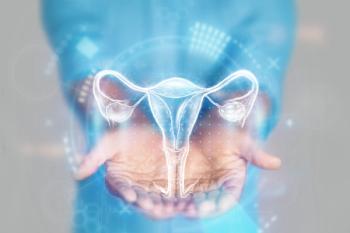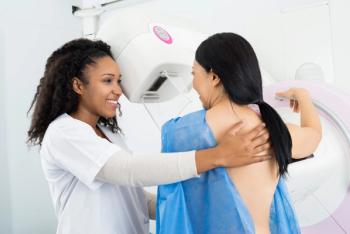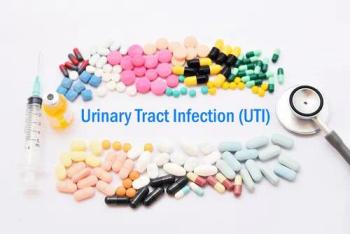
A recent study revealed that patients with untreated or new-onset hypertension face elevated chances of uterine fibroid diagnosis, underscoring the potential of antihypertensive therapy in mitigating this risk among midlife individuals.

A recent study revealed that patients with untreated or new-onset hypertension face elevated chances of uterine fibroid diagnosis, underscoring the potential of antihypertensive therapy in mitigating this risk among midlife individuals.

A recent study explored the correlation between placental histologic types and recurrent preterm birth risk, shedding light on potential predictive factors for obstetric outcomes.

Review some of the top stories from the Contemporary OB/GYN website over the last week, and catch up on anything you may have missed.

A recent study delved into the intricate clusters of term preeclampsia, shedding light on its diverse manifestations and the pivotal role of intravascular inflammation, paving the way for improved classification and management strategies.

Discover how maternal vascular indices at 35 to 37 weeks' gestation offer crucial predictive value for identifying preeclampsia risk.

A recent suggests that implementing a personalized opioid prescription protocol significantly reduces total morphine milligram equivalents and the number of opioid tablets prescribed at discharge following cesarean delivery.

A recent study revealed that women who experience major adverse pregnancy outcomes face heightened long-term mortality risks, shedding light on the need for comprehensive understanding and preventative measures in women's health.

A recent meta-analysis suggests sex as a modifying factor in the development of ABCA4-associated retinopathy, revealing a higher proportion of women among individuals with a mild reduced penetrant ABCA4 variant, impacting prognosis predictions and recurrence risks.

Discover how cutting-edge single-cell RNA sequencing unveils molecular insights into placenta accreta spectrum disorders, potentially revolutionizing diagnostics and treatments for this life-threatening pregnancy complication.

A recent study highlighted factors impacting increased maternal mortality rates in the United States, shedding light on the repercussions of altered surveillance methods on statistics accuracy.

Investigating genetic correlations and shared loci sheds light on potential causal relationships between reproductive traits and uterine leiomyomata, offering insights into their complex interplay and urging further mechanistic exploration.

A recent study found that COVID-19 infections within 10 weeks after embryo transfer show no correlation with in vitro fertilization pregnancy outcomes.

A study recently published in Nature Mental Health found how social stress in adolescence can have long-lasting effects in female mice, with implications for postpartum depression (PPD) in humans.

A recent study found that human papillomavirus vaccination when aged under 20 years, coupled with active surveillance for cervical intraepithelial neoplasia grade 2, significantly lowers the risk of cervical intraepithelial neoplasia grade 3 or cervical cancer.

Discover how health-related social needs, such as transportation access and financial constraints, hinder mammogram uptake among women aged 50 to 74 years.

Delve into the nuanced risks of venous thromboembolism and major bleeding post-gynecologic noncancer surgery, exploring procedure-specific variations and the implications for thromboprophylaxis strategies.

Review some of the top stories from the Contemporary OB/GYN website over the last week, and catch up on anything you may have missed.

A recent study revealed that employing maternal heart rate monitoring alongside fetal heart rate monitoring during labor significantly decreases the incidence of neonatal encephalopathy and severe neonatal acidemia.

Investigating the impact of prenatal vitamin C supplementation on lung function and wheeze occurrence in offspring of pregnant smokers, revealing insights into mitigating respiratory risks.

A comprehensive investigation confirmed Ovaprene's non-hormonal design achieves consistent contraceptive efficacy, paving the way for further pivotal trials in pregnancy risk assessment.

A recent study revealed a correlation between high doses and prolonged duration of exogenous gonadotropin use during in vitro fertilization and increased embryonic mosaicism alongside diminished live birth rates, prompting reconsideration of dosage and duration protocols.

In a recent interview, Cheruba Prabakar, MD, FACOG, shed light on the rising prevalence of sexually transmitted infections in the United States and the need for improved awareness and testing, particularly for overlooked conditions such as trichomoniasis.

Delve into the findings of a recent study revealing the heightened risk of developing uterine fibroids among Black women with a maternal history of the condition, shedding light on crucial implications for patient care and advocacy.

A recent analysis reported a high rate of mistreatment during childbirth, with the prevalence of mistreatment types differing between marginalized groups.

Jenell Stewart, DO, MPH, discusses the factors impacting the poor uptake of potential STI prophylaxes including doxycycline.

Learn about the symptoms of vulvovaginal atrophy and their frequency and impact in postmenopausal women, leading to extreme discomfort in some cases.

A recently published study in JAMA sought to determine if there is a link between acetaminophen use during pregnancy and children’s risk of developing autism, ADHD, or intellectual disabilities.

As a potential alternative to antibiotic treatments, this investigational immunization offered protection for several years.

Learn how to prepare for your menopause healthcare visit effectively and make the most out of your time with health care professionals, as advised by experts selected by The Menopause Society.

A new study revealed that hybrid vaginal ovules, incorporating curcumin and miconazole nitrate, offer effective relief against Candida albicans, potentially revolutionizing treatment for vulvovaginal candidiasis with reduced dosing frequency and adverse effects.